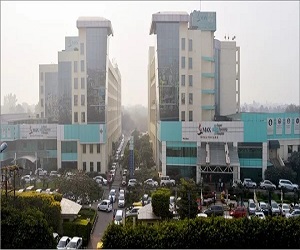The rotator cuff comprises muscles and tendons that connect your upper arm bone to the shoulder blades. When the rotator cuff sustains damage, you may experience shoulder weakness. Over time, movement of the shoulder may become increasingly challenging, prompting a visit to your doctor. Your doctor will assess the situation and determine whether rotator cuff repair surgery is necessary. This surgery aims to mend the damaged tendon, restoring the ability to move your arm freely.
Benefits of Rotator Cuff Tear Surgery
First, you need to learn the benefits of rotator cuff tear surgery:
- The procedure is minimally invasive, resulting in minimal scarring. Surrounding tissues remain largely unaffected, contributing to a quicker recovery process.
- Knotless double-row repairs enhance tendon-to-bone contact, leading to improved flexibility. This technique is particularly effective for repairing posterior rotator cuff tears.
- Nowadays, surgeons use new anchors to help reattach the torn rotator cuff to the bone. Thus, it improves the function of the bone, and you will find it easy to move your arm.
Once you get familiar with the benefits, you can eliminate all the worries.
Who needs the surgery?
Patients with a tear in the rotator cuff may require rotator cuff tear surgery. This surgical intervention aims to address the damaged rotator cuff, ultimately facilitating flexible movement of the arm.
Rotator Cuff Tear Surgery Procedure
Here is a detailed view of how the surgery is carried out. The steps are:
- The surgeon typically makes a small incision, and the deltoid muscle is retracted to access the torn rotator cuff. In cases of more severe tears, open repair techniques may be employed.
- An arthroscope is inserted through the incision and connected to a monitor, providing surgeons with a clear view of the shoulder. Additional incisions may be made to insert other surgical instruments as needed.
- An arthroscope helps repair the damaged tissues, and the rotator cuff starts functioning again.
Typically, patients are discharged within 2-3 hours of the surgery. However, in case of post-surgery complications, a longer stay of 1-2 days may be necessary. Before your doctor recommends rotator cuff tear surgery, you will undergo imaging tests to assess the condition of the rotator cuff.
Recovery and Post-Surgery Care
Post-surgery care is crucial for a speedy recovery. While it typically takes 6-8 weeks to resume normal activities, full recovery for large tears may extend from 6-12 months. Post-operative care entails the following:
- You should avoid lifting or pushing heavy stuff for at least 6 months after the surgery.
- You must use the sling for at least 4-6 weeks post-surgery.
- While bathing, you may remove the sling that helps you move the arm freely.
- Ice therapy relieves pain, and keeping the ice pack for at least 48-72 hours post-surgery is good.
- You may appoint an expert who will remove the pain catheter after 72 hours of the surgery. Also, it’s important to do shoulder dressing before you get a shower.
So, you can now recover easily, and the surgery helps you move your arm confidently.
Risks and Complications
The surgery has some risks and complications. Now, you have to learn the risks you may face post-surgery:
- Surgery may carry a risk of damaging adjacent nerves, potentially affecting the movement of shoulder muscles.
- Partial detachment of the deltoid muscle is another significant complication that may arise. The surgeon will reposition it correctly, and it’s essential to provide proper care to this area during the recovery period.
- There is always a chance of re-tear; if it happens, you have to consult your doctor without delay.
- After the surgery, you may get an infection in the incision area. Doctors will prescribe antibiotics that slowly heal the infection.
Rotator Cuff Tear Surgery cost in India are as follow
| Treatment | Cost in USD | Stay in Hospital |
| Rotator Cuff Tear Surgery | 2700-3300 | 1-2 Days |
| Shoulder Replacement Surgery | 6400-6900 | 2-3 Days |
| Trigger Point Injection (TPI) | 110-140 | 0 Days |














